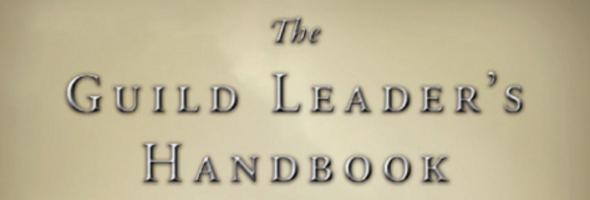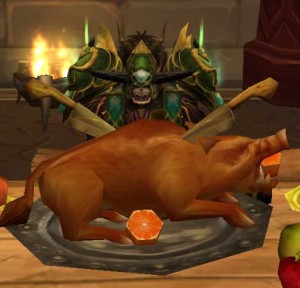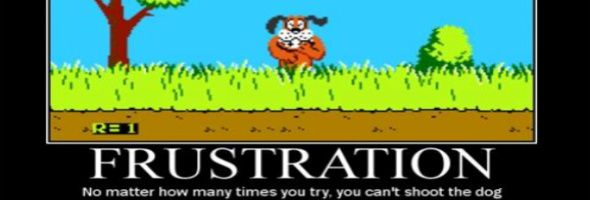This is the most important position you’ll ever fill throughout the entirety of your guild’s existence. In fact, it is so important, guilds will often disband if there isn’t a competent nor capable one. If working on farm content, raids can typically get by with zero to minimal guidance. Everyone runs by the same playbook and routine strategies are done without any problems (usually).
But once you hit progression content, you’re going to be stuck. If your raid is leaderless, it’s going to be painful and you need a plan.
So, do people really recruit raid leaders? In many cases, the guild leader and raid leader are one and the same. There are some exceptions (such as in Conquest where the positions are separated). But back to the original question: Do people recruit raid leaders?
Typically, most raiding guilds do not. Raid leaders are usually promoted from within. There are two basic things I look for when deciding on a raid leader. Without these two qualities, I skip and move on entirely.
- Competency: Now this encompasses a wide range of leadership skills. I just lump them all together in here for the sake of simplicity. These are things including but not necessarily limited to skills, charisma, vision, tactics, and so forth. Basically, does this player have what it takes to lead and deliver the necessary results?
- Desire: Do they actually want to do it?
And that second point is a super important question. That raid leading wannabe you want to quarterback your raids might be the perfect person to do it. But if she has no interest or desire, it’s not going to work.
Where do I go to get raid leaders from?
In a nutshell, either you have a sleeper raid leader within the guild who emerges to take the flag when things look grim or you look outward and see if you can fish up one.
Option 1: Promoting from within the guild
These are usually the players that have stood by you for a long time. The existing raid leader left a void to fill. There could be people from inside who are looking for a chance to step up and take a larger role within the guild. Or it could be that they sense the guild is on the road to failure unless someone takes over and that person wants to be the one to do it.
Again, your group may run into the problem of not having the right person who can do the job. A skilled player who is familiar with the game and their class might not have the appropriate leadership qualities. Or maybe they work in a management type job and doesn’t want to deal with that level of responsibility on their off time. If your search for a raid leader comes up short, you’ll need to come up with options. Try to figure out why that person isn’t a good candidate. You can’t change their desire. However, you might be able to help improve their competency.
Ultimately though, hope for the best. Be prepared for the worst.
Pros
Familiarity with guild culture
Players used to the leader’s personality
Intimately familiar with players and capabilities
Cons
Might not be anyone qualified from within to take the job
Potential prejudice or favoritism to specific players
Option 2: Recruiting outward
This isn’t exactly the most common approach. You don’t see many guilds advertising for a powerful position like this one either. I suspect the main reason would be on trust. Everyone in the guild has had time to get familiar with each other. Not only would you be introducing an outside player, your guild is being asked to follow their commands. That bond between raid and raid leader just isn’t there yet.
It’s like a new manager being brought in. No one really knows who she is. Is she lenient? A hard ass? Accommodating? By the book? No idea!
Don’t forget that having a new player calling the shots from outside the guild means they’re largely unaffected by any guild politics and will have a fresh perspective on raids. Of course, you never know what you’re getting. If you truly plan on going this route, raid leading applicants need to be screened a lot more carefully.
Pros
Fresh perspective and new ideas
Unaffected by any guild influences
Cons
Players have no idea how to react
Lack of initial guild chemistry
—
When my raid leader hung up his claymore months ago, I was in a tight spot. The short list in my mind for replacement raid leaders had no desire to do so simply due to other responsibilities. There were other players I had considered asking, but I didn’t know if they had the skills to pull it off. The only way to know for certain is to assemble a raid, pass them lead and say “Here ya go!” and one of the senior raiding guys who had been with us for a long time wanted to give it a shot.
It was a leap of faith. Either he would sink or swim. To my delight, he did a pretty darn good job after he shook off a few raid leading jitters during the first few days at the helm. But it was to be expected.
Had he not spoken to me beforehand, I would have had no choice but to turn outwards and look off guild for someone to help coach the raid. I can’t honestly think of any moment in my experience in the game where I’ve read about guilds specifically recruiting raid leaders that were outside their organization. What commonly happens is a player either gets the nod up from management to take over or the guild implodes due to lack of interest and focus. The latter is not an option for me. I’ll admit, it would have been a remarkably interesting process (and experiment) to start off raid leaderless and end up with a fully situated quarterback acquired outside the guild.
It’s like hiring a new coach for a team. Players are so used to certain plays and systems. The new coach comes in and throws things out the window.







